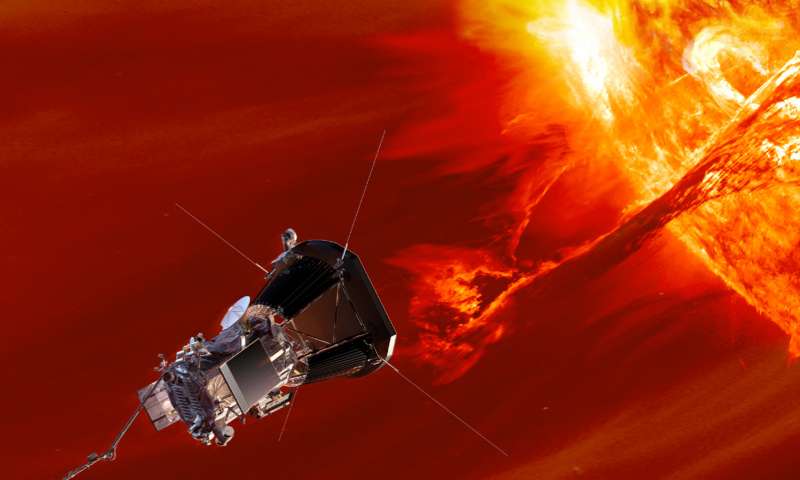Sometimes the sun can be unpredictable and can sometimes send explosive bursts of charged particles hurtling down towards Earth wreaking havoc as is does. The blasts can affect aircraft, power grids, and satellites with its damaging radiation. By scientists getting to know why the sun emits these particles can help in the predicting of space weather. If we can predict when space weather like solar flares are on their way to us we can better prepare for it.
Sophisticated sensors are now being developed that are going to be used on a new NASA mission that’s set to launch the Solar Probe Plus spacecraft in 2018. It’s currently in production at the moment over at the John Hopkins University Applied Physics Laboratory and is planned to make 24 solar flybys over the next 7 years. This spacecraft will set records as it moves becoming the fastest moving man-made object ever, sliding up closer to the sun than any other craft before it, exposing itself to temperatures in excess of 2500 degrees Fahrenheit.

The Solar Probe Plus‘ mission is to essentially get close enough to the sun so that it can gather data on it, including the mechanisms that heat the corona and accelerate the solar wind. To be able to do this, the spacecraft will be fitted with what is known as the Faraday cup. The Faraday cup is an instrument capable of measuring the full force of supersonic solar particles and radiation. This investigation is the first of its kind and experts are excited to get the chance to uncover some of the most fundamental science questions and “to better understand the risks space weather poses to the modern communication, aviation, and energy systems we all rely on,” said Justin C. Kasper, principal investigator at the Smithsonian Astrophysical Observatory and Professor of Space Science at the University of Michigan. He continued, “many of the systems we in the modern world rely on – our telecommunications, GPS, satellites, and power grids – could be disrupted for an extended period of time if a large solar storm were to happen today. Solar Probe Plus will help us predict and manage the impact of space weather on society.”
More News to Read
- Tesla’s New Upgraded Autopilot Uses 2 Out of 8 Cameras
- How to Achieve Effective Quantum Information Transfer Even in the Presence of Noise
- New Alien Detecting Technique Created by Caltech Researchers
- Was it Gravity that Saved the Universe After the Big Bang?
- Rapid Human Trips to Mars Could Soon Be Possible











